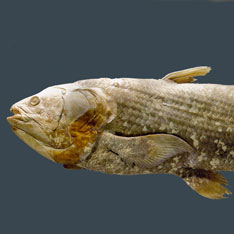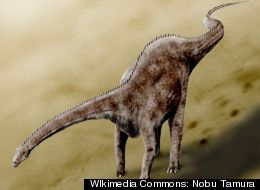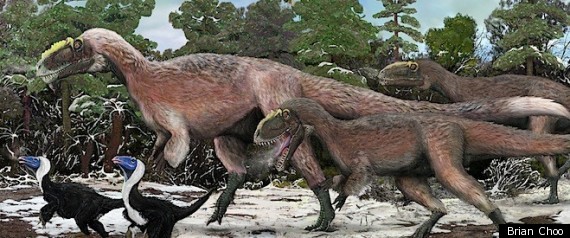Thu
18
Apr
2013
Secrets of the Evolution of Ancient Fish
From 
Scientists were able to decipher the genome of the fossil fish coelacanth
April 18, 16:09 | Ivan Ukhov

Scientists were able to decipher the genome of the coelacanth - a fossil fish that has not changed over the past 300 million years.The data are published on the website of the journal Nature .
After comparing the DNA of the coelacanth and other creatures, it was found that the rate of change of genes in the fossil fish was significantly lower than researchers previously thought.
Fri
20
Jul
2012
Dinosaur Eating Habits Revealed By Analysis Of Diplodocus Skull
Posted: 07/18/2012 12:52 pm Updated: 07/18/2012 1:15 pm
Call it a prehistoric paradox. Huge herbivorous dinosaurs like Diplodocus—at about 30 meters in length, one of the longest dinos ever discovered—needed to consume vast quantities of plants. And yet scientists have puzzled for years over the Diplodocus’ long snout and protruding, peglike teeth--which don't look like the right equipment for the job.
With the help of finite element analysis—an imaging technology commonly used in airplane design—a team of researchers created a 3D model of the Diplodocus skull and used it to figure out just how the dinosaur dined.

Diplodocus’ eating habits have been revealed by a
technique called finite element analysis.
The study, published July 16, 2012 in the Journal Naturwissenschaften, suggests that Diplodocus was actually capable of two feeding techniques: precision biting and raking leaves off of branches with its teeth.
"Our results show that there is no biomechanical reason to reject either hypothesis or that Diplodocus was capable of both," researcher Dr. Mark Young, a geoscientist at the University of Edinburgh, told The Huffington Post in an e-mail.
Tue
12
Jun
2012
Yutyrannus Huali, Tyrannosaurus Rex Relative, Was Largest Feathered Dinosaur Ever
From AOL
By: Jennifer Welsh, LiveScience Staff
Writer
Published: 04/04/2012 01:18 PM EDT on LiveScience
 First Posted: 04/05/12 10:58 AM ET Updated: 04/05/12 10:58 AM ET
First Posted: 04/05/12 10:58 AM ET Updated: 04/05/12 10:58 AM ET
A newly discovered titanic tyrannosaur is the biggest feathered dinosaur yet, reaching up to 30 feet (9 meters) long and weighing more than 3,000 pounds.
While smaller than Tyrannosaurus rex, the new species, named Yutyrannus huali -- meaning "beautiful feathered tyrant" -- is still 40 times the weight of the largest feathered dinosaur known previously, Beipiaosaurus, which was described in 1999.
"Yutyrannus dramatically increases the size range of dinosaurs for which we have definite evidence of feathers," study researcher Xing Xu of the Chinese Academy of Sciences in Beijing said in a statement. "It's possible that feathers were much more widespread, at least among the meat-eating dinosaurs, than most scientists would have guessed even a few years ago."
The researchers found three well-preserved fossils of the species in a dig in Liaoning Province, in northeastern China, the same place Xu and his colleagues discovered Beipiaosaurus. [Album: The World's Biggest Beasts]
 DISCUSSION
GROUP
DISCUSSION
GROUP


